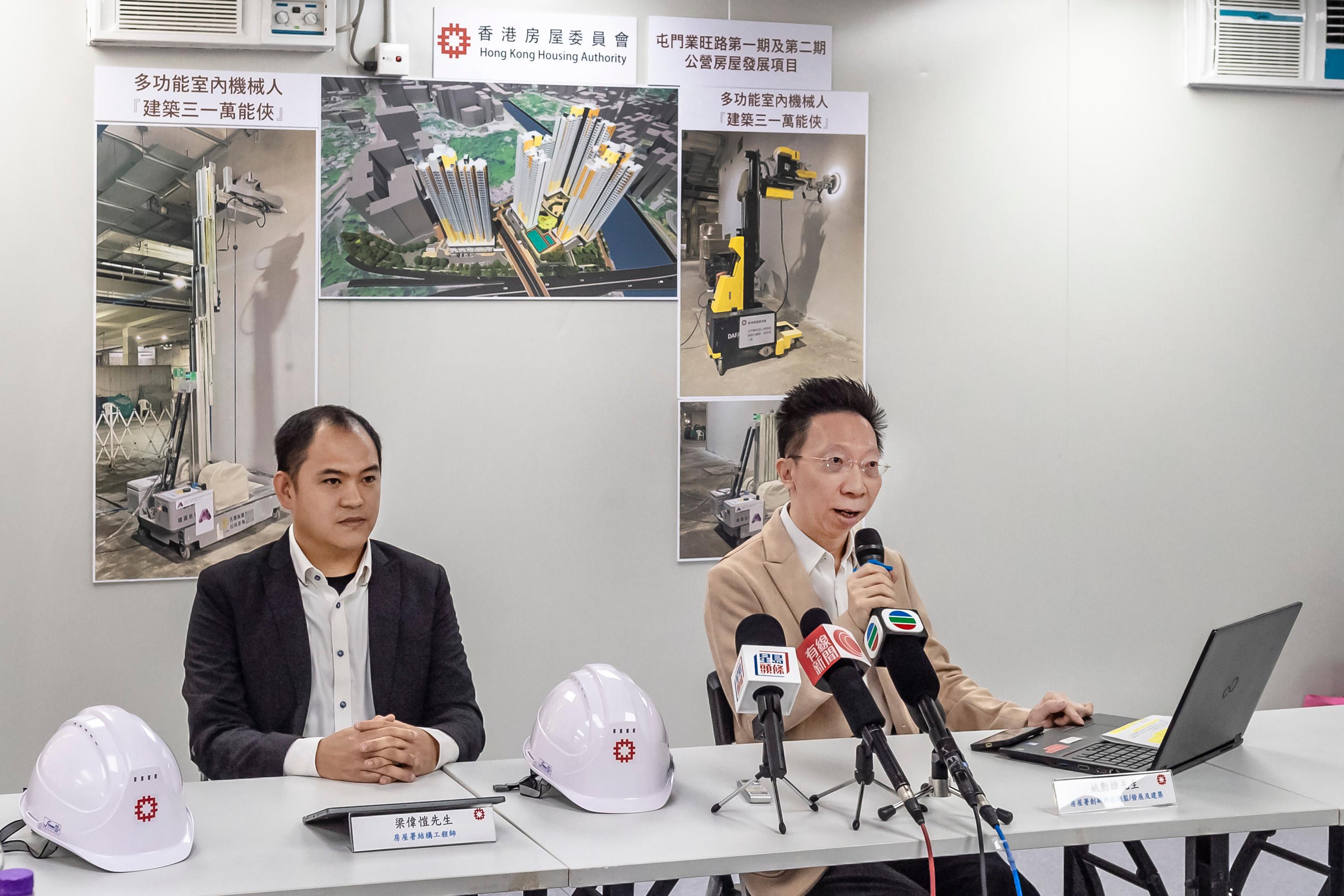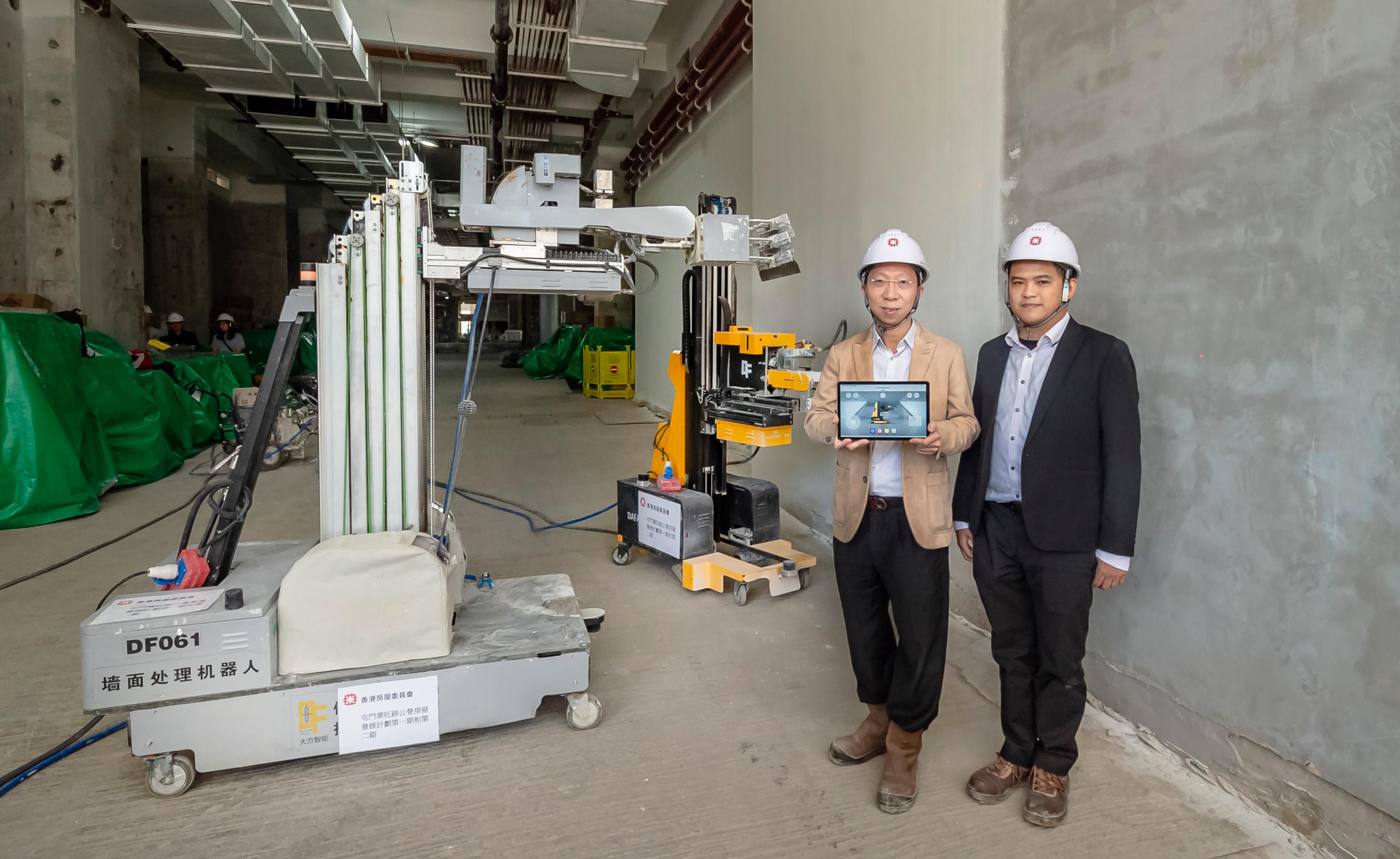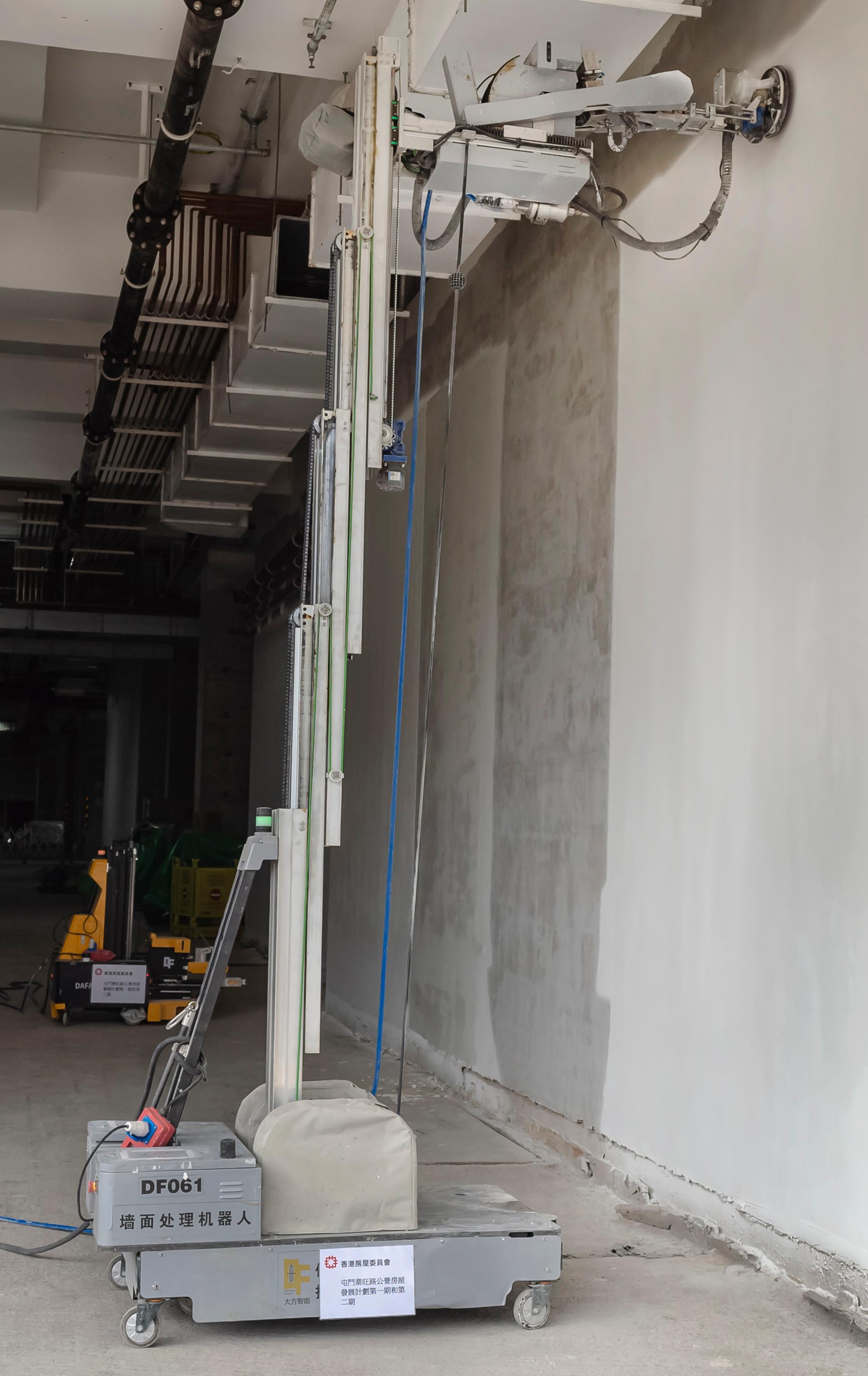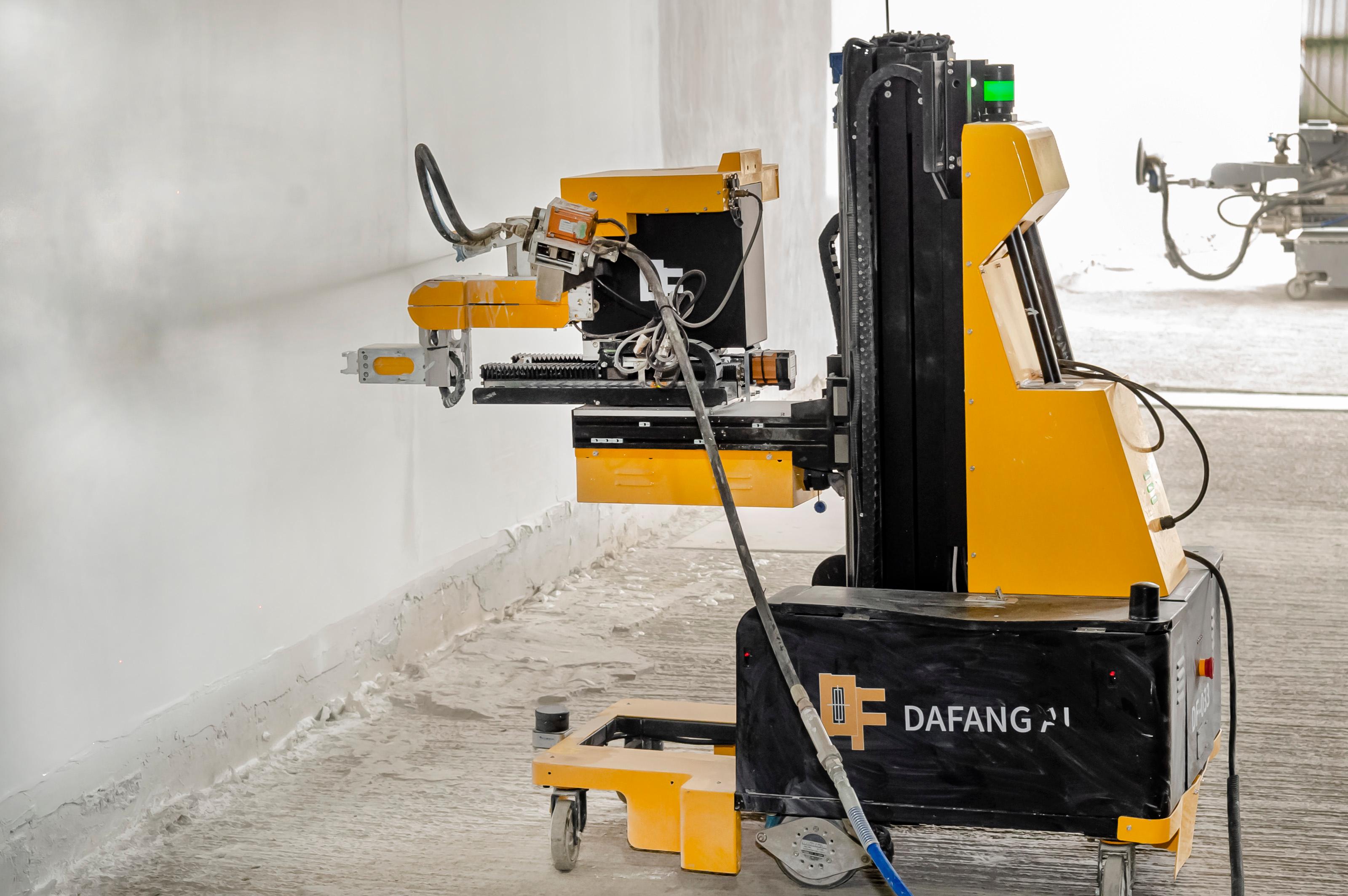Housing Authority introduces multifunctional indoor construction robot to boost safety at public housing sites (with photos)
The following is issued on behalf of the Hong Kong Housing Authority:
Since the Hong Kong Housing Authority (HA) introduced new requirements relating to construction robotics in its tender evaluation of new building contracts in 2020, there are different types of construction robots being used to perform various tasks in different public housing projects to improve site safety and enhance productivity and quality.
The indoor construction robot introduced today (November 13) demonstrated its multifunction to complete skim coating, grinding, and painting works, which is being deployed to four public housing projects.
The Head/Development and Construction InnoTech of the Housing Department, Mr Romeo Yiu, and Structural Engineer of the Housing Department Mr Arthur Leung mentioned today at a media briefing, "The multifunctional indoor construction robot can perform three different tasks by first using laser scanning to sense the surroundings, and use Artificial Intelligence vision and algorithm to detect ceiling, pipe duct, and other obstruction to plan the best working path to uplift efficiency."
The multifunctional indoor construction robot can collect dust during grinding works to keep a tidy site environment. Furthermore, the robot operator can remotely control the robot at ground level to avoid working at height and reduce exposure to paint, so as to enhance occupational safety and health. As the construction robot can estimate the construction materials more accurately, this in turn reduces waste and achieves environmentally friendly construction.
During the media briefing, the HA project team demonstrated two different sizes of the multifunctional indoor construction robot in a Yip Wong Road site. The larger-size robot is suitable for works at high headroom sites, such as carpark and bus terminus, while the smaller-size robot is suitable for works on domestic floors. The HA project team also demonstrated the actual operation of the multifunctional indoor construction robots at the briefing, namely skim coating, grinding, and painting works. The team also switched different working parts of the robots within few minutes.
Mr Yiu said, "To cope with the massive amount of public housing construction and to alleviate the ageing and shortage of construction manpower, the HA has been embracing innovation and technology, including the use of multifunctional indoor construction robots, to enhance site safety and attract new entrants."
He said the HA will continue to use different types of construction robots in more projects and tasks to boost site safety and unleash synergy effects with the adoption of construction robots, and promote upgrading and transformation jointly with the construction industry.




